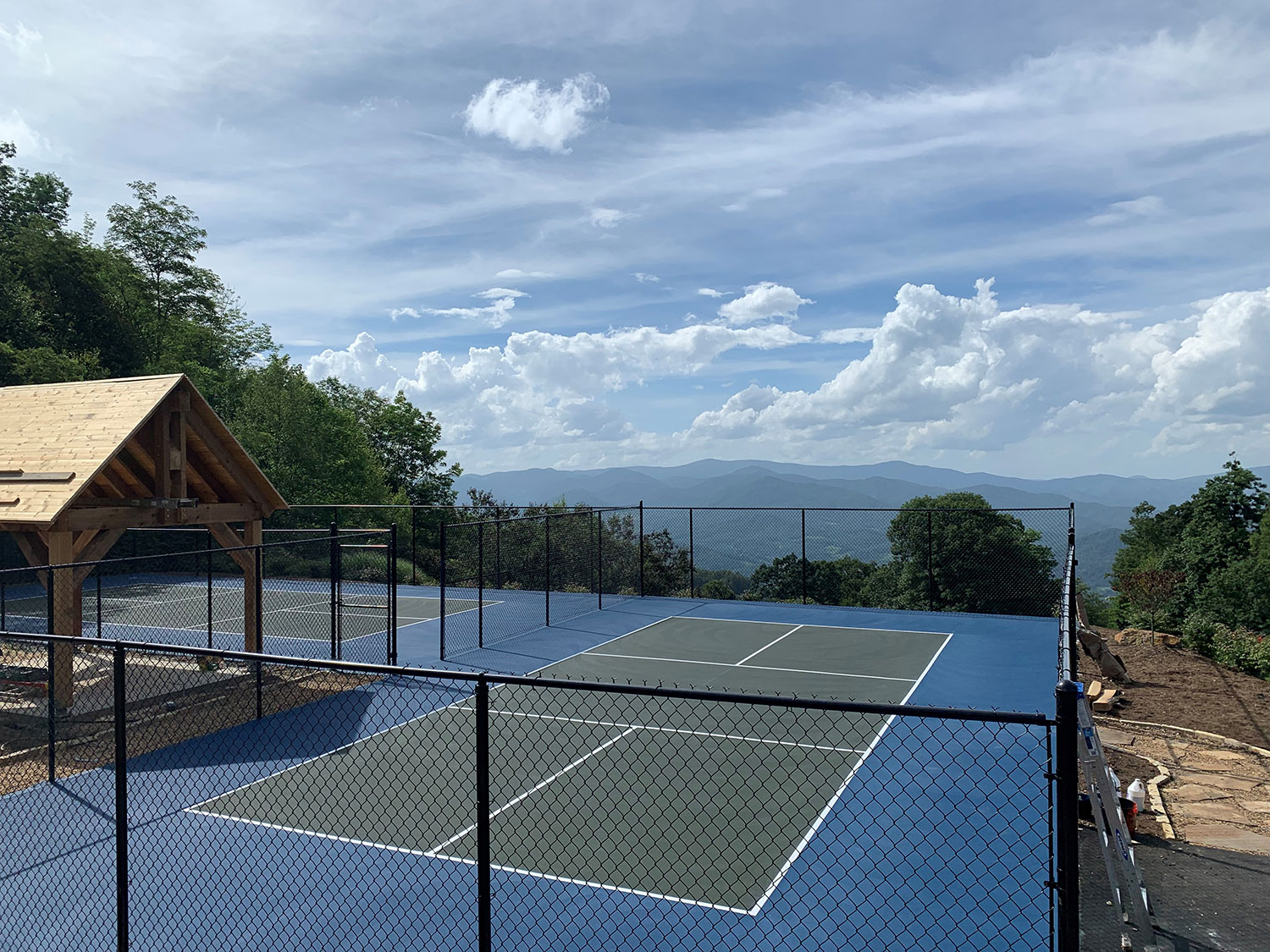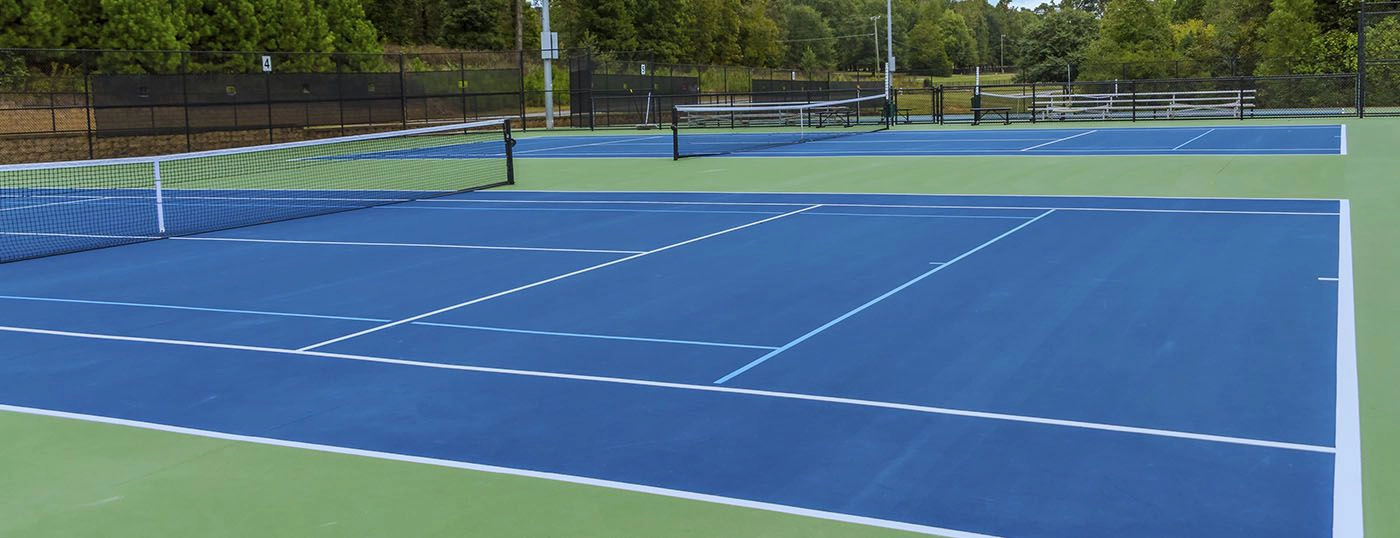Essential Steps for Effective Pickleball Court Construction
Creating a pickleball court calls for cautious consideration of different elements to make certain an ideal having fun setting. Furthermore, precise adherence to court dimensions and web specs is important for fairness in play.
Determine Court Area

Alignment is another important element; courts must be positioned to reduce glare from the sunlight, preferably running north-south. This positioning helps players maintain visual clarity throughout play, particularly during morning or late afternoon sessions. Additionally, the surrounding atmosphere needs to be assessed for prospective distractions, such as sound from web traffic or close-by tasks, which may interfere with the satisfaction of the game.
Accessibility for all gamers, including those with impairments, need to also be focused on in the choice of the court place. Ample paths and seating areas must be integrated into the layout to accommodate every person. In summary, a well-balanced court place not only improves play conditions yet likewise advertises a welcoming environment for gamers of all ability degrees.
Select Appropriate Products
Selecting suitable materials for the construction of a pickleball court is basic to guaranteeing a top notch having fun surface area and toughness - Pickleball court construction company. The choice of materials directly affects the efficiency of the court, gamer safety and security, and maintenance needs

Along with the surface, picking suitable internet articles and webs is vital. Steel articles, powder-coated for weather resistance, make certain security and long life. The net itself needs to be of premium nylon or polyester, created to endure wear and keep stress gradually.

Understand Court Dimensions
Just how can comprehending the specific dimensions of a pickleball court improve both gameplay and player experience? Familiarity with court measurements is vital for ideal play, ensuring that gamers can effectively plan and execute their shots. A standard pickleball court gauges 20 feet broad and 44 feet long for both songs and doubles suits, with a non-volley zone, or cooking area, extending 7 feet from the internet on either side. This layout influences shot choice, placing, and total gameplay dynamics.
Correct adherence to court measurements permits for justice and adherence to main regulations, promoting a competitive environment. Furthermore, recognizing these dimensions help in player security by avoiding overcrowding in marked areas. The internet height is likewise an essential element, evaluated 36 inches at the sidelines and 34 inches at the facility, which influences the trajectory of serves and returns.
Moreover, exact dimensions facilitate the building of courts that fit differing skill degrees, boosting the total player experience (Pickleball court construction company). By guaranteeing that dimensions are precisely carried out, gamers can participate in a balanced and enjoyable video game, ultimately advertising the development of pickleball as a popular sporting activity
Choose Surface Type
Choosing the suitable surface kind for a pickleball court is essential for optimizing gamer efficiency and ensuring safety and security. One of the most common surface area materials consist of asphalt, concrete, and specialized sports surfaces, each supplying unique benefits and considerations.
Asphalt courts are preferred because of their sturdiness and cost-effectiveness. They offer great grip and are reasonably easy to maintain, making them appropriate for neighborhood tasks. They might require routine resurfacing to preserve ideal playing conditions.
Concrete surfaces are another feasible choice, understood for their toughness and durability. They supply a constant playing experience and can be do with different appearances to boost grip. Concrete can be hard on the joints, which might lead to player exhaustion over expanded play.
Specialized sports surfaces, such as modular or acrylic floor tile systems, provide specifically to pickleball. These surface areas typically give premium shock absorption and grip, boosting player comfort and performance. They may include higher preliminary costs and upkeep factors to consider.
Eventually, picking the best surface area type needs cautious consideration of budget, expected use, and desired playing qualities to produce a safe and enjoyable pickleball atmosphere.
Strategy for Drain and Illumination
Reliable planning for drain and lights is critical in the construction of a pickleball court, as it straight impacts both playability and safety and security. Appropriate drainage systems guarantee that water does not gather on the court surface, which can bring about hazardous playing conditions and long-lasting damages to the surface area. Applying a properly designed water drainage plan entails analyzing the site's topography, soil type, and local climate conditions. It is necessary to incorporate sloping surface areas that route water far from the court and use appropriate drainage products, such as perforated pipelines and crushed rock, to assist in effective water drainage.
Along with drainage, sufficient lights is essential for expanding play and enhancing safety throughout night matches. The lighting layout should offer consistent lighting across the court, minimizing darkness and glow. This can be achieved through the installation of pole-mounted LED lights that are positioned check my reference at suitable elevations and angles. It is essential to consider local policies regarding light pollution and make certain that the lighting system does not adversely impact surrounding properties. By addressing both drain and lighting efficiently, the construction of a pickleball court can meet the demands of players while promoting navigate to these guys a pleasurable and secure setting.
Final Thought
Finally, effective pickleball court construction needs cautious factor to consider of multiple variables, including place, products, dimensions, surface drainage, type, and lights. Each aspect plays a crucial duty in making sure a satisfying and secure playing environment. By adhering to these necessary steps, the construction process can generate a high-grade court that satisfies the demands of players while promoting the sport's growth and ease of access. Appropriate preparation and implementation will eventually add to a functional and lasting center.
When planning the building of a pickleball court, selecting an appropriate court location is critical for ideal playability and availability. Appropriate drain systems ensure that water does not build up on the court surface, which can lead to hazardous playing conditions and long-lasting read the article damages to the surface - Pickleball court construction company. It is necessary to integrate sloping surfaces that guide water away from the court and utilize suitable drainage materials, such as perforated pipes and gravel, to assist in reliable water drainage
By resolving both water drainage and lighting efficiently, the building and construction of a pickleball court can fulfill the needs of gamers while promoting a risk-free and pleasurable setting.
In verdict, effective pickleball court construction needs cautious factor to consider of numerous variables, including location, materials, measurements, surface area water drainage, lighting, and kind.